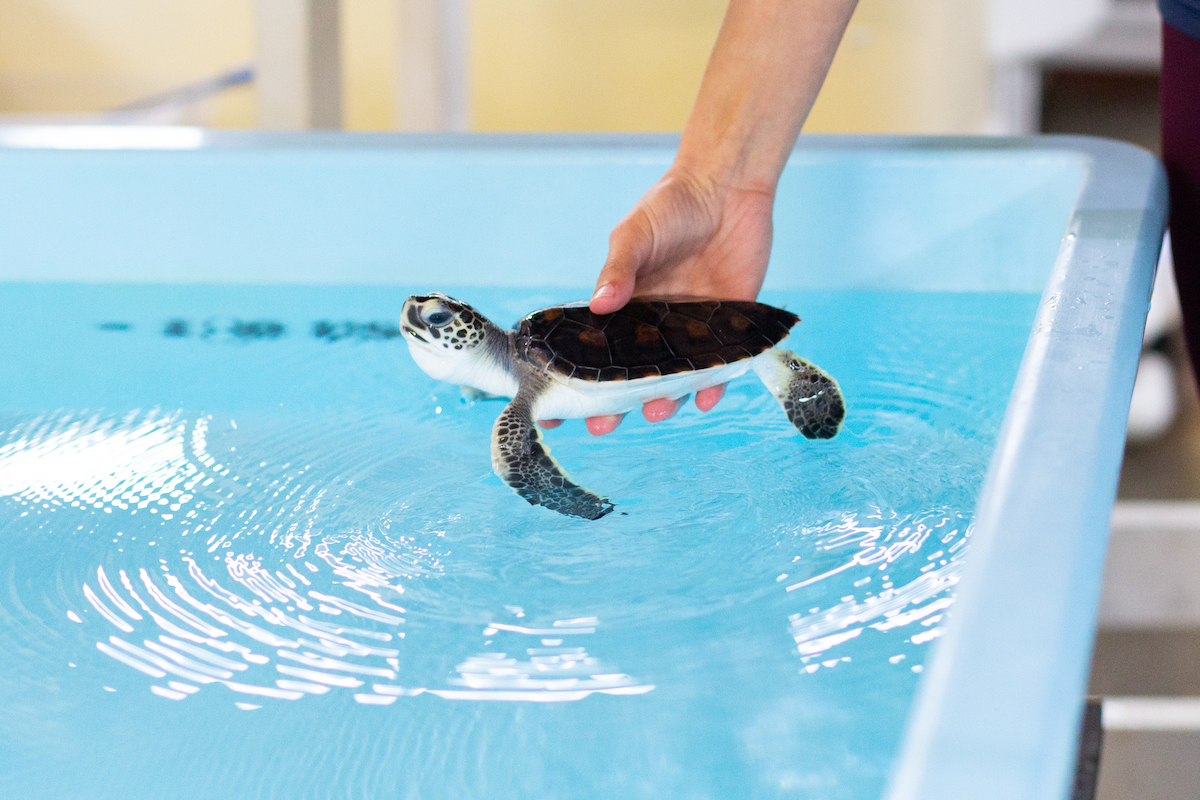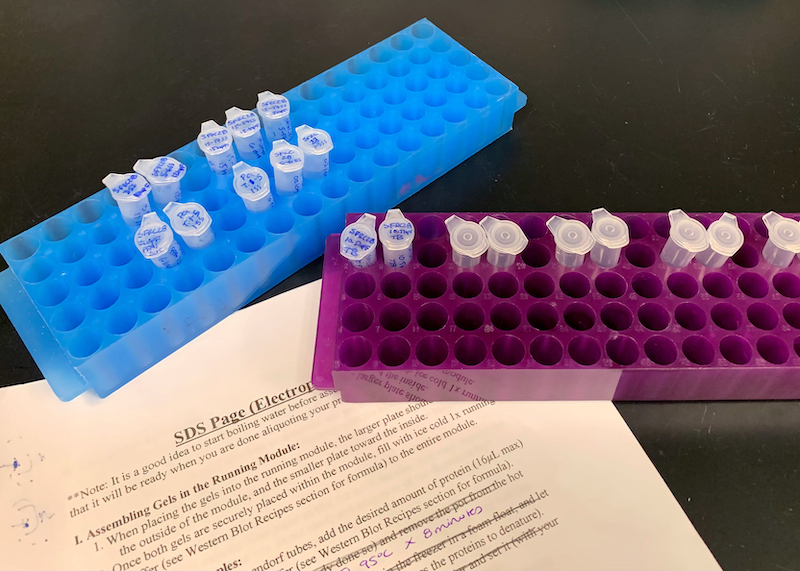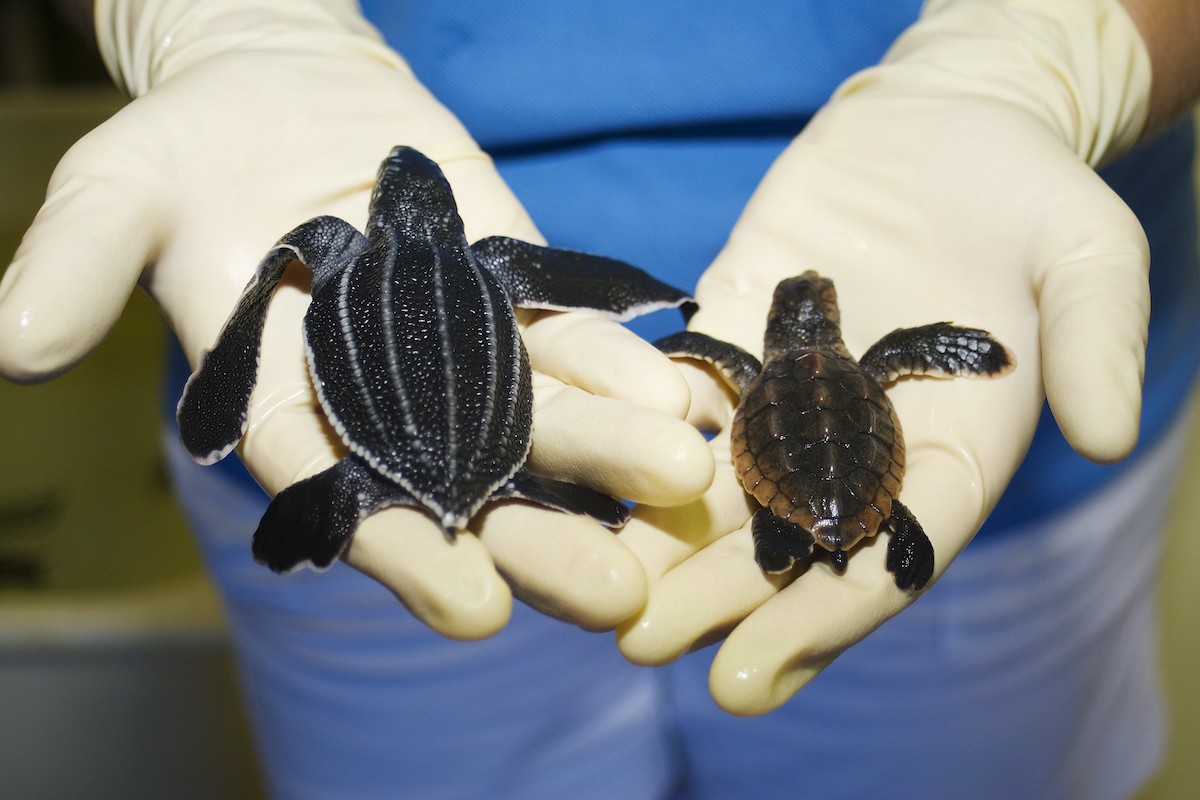

Sea turtle nest conditions, such as temperature and moisture, play important roles in determining if a sea turtle hatchling will be male or female. Unlike people, the sex of sea turtles is determined by environmental conditions during their development within the egg. A hot and dry nest will produce mostly female turtles, while nests that are cooler and wetter produce more males. We simplify this explanation to Hot Chicks, Cool Dudes. Regional predictions of climate change suggest that it will rain less along the coast of Florida, but when it does rain, it will come in the form of severe storms more often and routine rains will be rarer.
Thus, it is vital we also understand the role of rainfall on turtle development. Ongoing research projects are focused on understanding how changes in rainfall affect nest conditions.
It is impossible to verify a hatchling’s sex by just looking at its external features, so we have to use other methods to verify their sex. When a nest is laid we put a device called a data logger in with the eggs that record the temperature. Based on the recorded temperatures, we can estimate the relative percentages of males and females in a nest, but it is not always 100% accurate. The Wyneken lab collects a few sea turtle hatchlings from several nests throughout the season and raises them for about 3-4 months until they grow to 120 grams (less than half a pound). We can then identify their sex by looking internally. Due to the warm temperatures during sea turtle nesting season (in the summer) most of the hatchlings in our lab are females. Some years we don’t find a single male. With record high temperatures each year, scientists are worried that the balance of males and females will hit a tipping point, with too many females and not enough males in the population to ensure the survival of the species.
 Sexing Blood Tests
Sexing Blood TestsThe method of raising hatchlings in the lab to verify their sex is time-consuming and expensive. Plus, we can only verify the sex of a small percentage of the hatchlings each nesting season. We recently identified a protein in loggerhead sea turtle blood that tells us if a hatchling is a male or a female. If this protein, called AMH, is present in the blood, the hatchling is a male. If it is not present, the hatchling is a female. This blood sampling may allow us to measure sex ratios on a larger scale and make it possible to measure hatchling sex ratios throughout the populations.
 Long Term Trends
Long Term TrendsThe regional weather predictions in South Florida have been trending towards hotter temperatures with fewer rain events. The hot weather and rainfall affect sea turtle nests. Routine spring and summer rains are good for the underground eggs, but when rain events come as tropical storms and hurricanes, the nests suffer. Weather also affects how eggs develop. When eggs are laid, the embryos are neither male nor female. However, as they develop, warmer temperatures direct embryos to become female. Yet, heavy rains can change the temperatures of individual eggs so sometimes males are produced. Wet weather makes predicting sex ratios a bit more complicated.
In conjunction with our sex ratio studies at the FAU Marine Lab, we are trying to understand the role of moisture (from rainfall) in sea turtle sex determination. In hotter, drier nesting seasons, sampled nests on our beaches have produced 100% females. But wetter nesting seasons (whether they are hotter than normal, or not) result in some male hatchlings. Similarly in the lab, wetter nests incubating at primarily female-producing temperatures resulted in more males than would be anticipated based on temperature alone. To make things even more interesting (and peculiar), nests with low and high levels of moisture had a narrower range of temperatures that produced both sexes (the technical term is a transitional range of temperatures) when compared to nests of moderate moisture.
We hypothesize that increased rainfall may lead eggs to take in extra moisture, then release it decreasing egg temperatures through evaporative cooling (like how our sweat cools us down), thus wet weather can produce male hatchlings even in a hot summer.